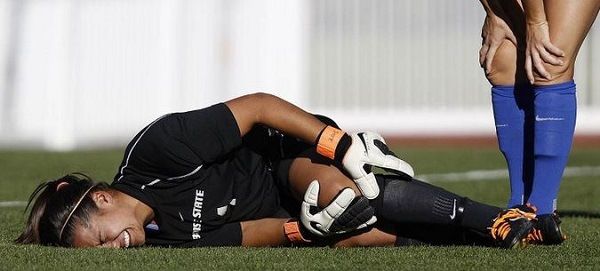One of the primary concerns for coaches and parents of youth athletes is always injury prevention. While the benefits of joining team sports and beginning routine physical activity at an early age are well understood, they never overshadow the risk of injury.
Luckily, in recent years, research, science and technology have advanced so greatly that we now know more than ever about the best ways to keep our bodies in good condition throughout adolescence and into adult life.
While the science of injury prevention can be in depth, we want to focus on three reminders for the parent, coach and athlete. While we can never fully ward against the unknown events of contact sports, if these three principles are always kept in mind, athletes’ bodies are better prepared to handle injury if it does occur – a term we call “injury resiliency.”
Mobility is a Must
One of the mistakes most American athletes make is not warming up properly. The classic “run a lap and stretch out” warm up has now been proven not only to slow down the nervous system, but also set athletes up for potential injury.
An illustration of how this warm up is not specific is just to ask yourself, “how many times during the play of any game do you sit and stretch without moving for 30 seconds?”
The Active Dynamic Warm Up has been experimented with top-class athletes of the world since the 1950’s. Even though most elite athletes have experienced this type of training, the American youth athlete is still in the dark.
The goals of the ADW is to first activate the core and glutes to help stabilize the spine and extend the hips. Second, to increase mobility, raise core temperature and increase blood flow to the joints and muscles. Third, to increase range of motion and prepare the joints for performance.
Who wouldn’t want a warm-up that could promise to increase blood flow, improve strength, conditioning, dynamic flexibility, balance and coordination, support injury prevention, and work on technical running form?
Strength Training Helps, Not Hurts
A common myth in training is that resistance or weight training is dangerous for young athletes. Current medical research has found that nothing could be further from the truth. Not only has resistance training been found to strengthen bones, muscles, ligaments and tendons, but strength training has also been directly linked to a decreased chance of injury on the field.
In building foundational strength training knowledge, young athletes have a better understanding of muscle mechanics and training with proper form. Proper technique during weight training with all athletes is about safety and injury prevention. It’s never the weight that injures someone. It’s usually improper lifting of the weight. The technique an athlete learns first is the technique they will use all along.
For more on youth strength training safety, read Youth Strength Training: 6 Safety Tips.
It’s Not If, But When
Unfortunately, it is a reality that most likely an athlete will in fact get injured some time in their athletic career. The higher the athlete advances in competitive sport, the more this chance increases. However, let’s consider the two types of injury – uncontrollable and controllable.
Uncontrollable injuries are those that happen in contact sports when a bad hit is made, or when a sudden accidental trip or fall occurs. Controllable injuries, on the other hand, are a result of a series of errors in movement and training. Controllable injuries can almost certainly be avoided, or at least lessened, with proper supervision and instruction from a certified coach. The fundamentals of avoiding controllable injuries is preaching safety and proper form during strength training, speed training and sporting events.

